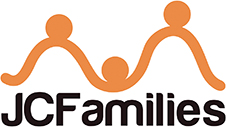Tagged: Kids
- This topic has 0 replies, 1 voice, and was last updated 12 years, 11 months ago by
Anonymous.
-
AuthorPosts
-
-
December 14, 2011 at 1:19 am #23251
Anonymous
Inactivesharing from baby-center:
What to expect at this age
Preschoolers are intensively learning rules and testing boundaries. That means yours may gleefully flout your directives and push the limits you impose whenever she gets the chance. And though a preschooler is much more capable of rational thought than a toddler, she’s still ruled by her emotions, and can turn on a dime from a happy-go-lucky kid to a flailing, wailing wild thing.
When your preschooler crosses the line or gets too worked up for her own good, sometimes the best way to help her get a handle on herself is to remove her from whatever sparked the meltdown (or the limits-pushing) in favor of a little quiet time, better known as a time-out. This discipline method is a great, non-punitive way to shape behavior. The key is knowing how and when to use the technique. Six strategies for making the most of time-outs:
What to doUnderstand what a time-out is u2014 and isn’t. If you don’t think of a time-out as punishment, neither will your child, and that’s as it should be. Instead, think of it as an opportunity to help your preschooler cope with common frustrations and modify her behavior. Although at times it may require superhuman effort, try not to scold, yell, or speak angrily when you call “time-out” u2014 the point isn’t to chastise your preschooler, it’s simply to help her switch gears. Quiet time allows your preschooler to calm down if she’s gotten worked up. Just as importantly, it gives you the chance to step aside and not get caught up in your child’s struggle. The goal of a time-out is to defuse and redirect an escalating situation in an unemotional way, and to teach your preschooler to behave without setting a negative example, the way yelling does.
Time the time-out. When it’s called for, impose a time-out swiftly u2014 as immediately after the transgression as possible. In fact, preschoolers often wind up for a while before they actually lose it. So when you can, call “time-out” before she blows. This will make it easier for her to settle back down and teach her to get a grip on herself before she loses control. Use an old-fashioned kitchen timer to track the minutes your child serves; most experts agree that a minute a year is a good rule of thumb (so a 4-year-old would spend four minutes in time-out). If you leave your preschooler in time-out longer than that, she’s likely to shift her focus from calming down to being angry and resentful, which counteracts what time-out is supposed to do.
Choose the right place. Find a time-out spot removed from the activity that set your preschooler off, but within earshot (a bottom step or a chair in a nearby room, say). Don’t put her somewhere frightening u2014 even her bedroom with the door closed can be too much in her heightened state, and a dark pantry or basement may well be fodder for future therapy. Remember: Your purpose is to calm her down, not to scare her into submission.
Many experts recommend a boring spot, with no toys or other distractions. Even so, you may find it helpful to encourage your child to experiment with self-calming techniques. If looking at a book, listening to some music, or even having her dolls duke it out helps your preschooler wind down, she’ll not only have served her time, she’ll have learned how to get her temper under control by herself. Eventually, she may even call her own time-outs (but don’t hold your breath).
Be consistent. Decide u2014 when you’re not angry yourself u2014 what actions merit a time-out. If you use time-out too often, you’ll dilute its effectiveness, so save it for the tougher problems u2014 aggressive acts such as biting, hitting, and throwing toys, or open defiance. Then find a quiet moment to discuss with your preschooler the time-out policy in your family, letting her know where you’ll give time-outs, for what reasons, and for how long. Once you’ve outlined the rules, stick to them. Being wishy-washy, or offering lengthy explanations or third and fourth chances will only invite protests. Your child needs to know exactly what to expect, and she needs to know that she can’t wheedle her way out of it. “You’re screaming, so you’re going to have a four-minute time-out right now,” is all you need to say.
Follow up. When your preschooler’s time-out is over, address the transgression that put her there in the first place. If she tackled her brother when he declined to share a toy, for instance, have her tell you what she did wrong and apologize to her sibling. Also ask how she’ll handle the situation next time. Don’t yell at her, don’t lecture her, and don’t give her a big hug now that it’s over. She may be remorseful (and you may even feel a little guilty for banishing her), but rewarding her with positive reinforcement at the end of the time-out may actually encourage future misbehavior.
Give your child plenty of time-in, too. Just as time-outs discourage bad behavior, “time-ins” reinforce good behavior. If you find yourself constantly imposing time-outs on your preschooler for getting into scrapes with her little sister, for instance, make every effort to “catch” her getting along with her sibling too. Then tell her, “What a great job you’re doing playing with Zoe. I love it when you’re kind to her!” The more effort you put into time-in, the less you may need to enforce time-out.
-
-
AuthorPosts
- You must be logged in to reply to this topic.
